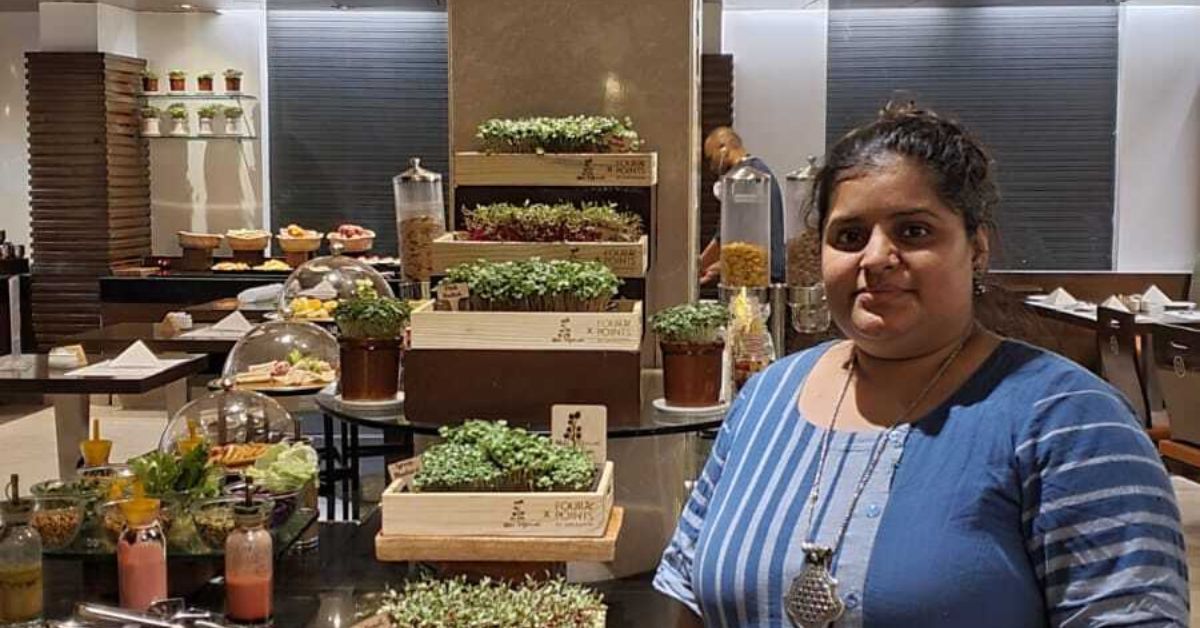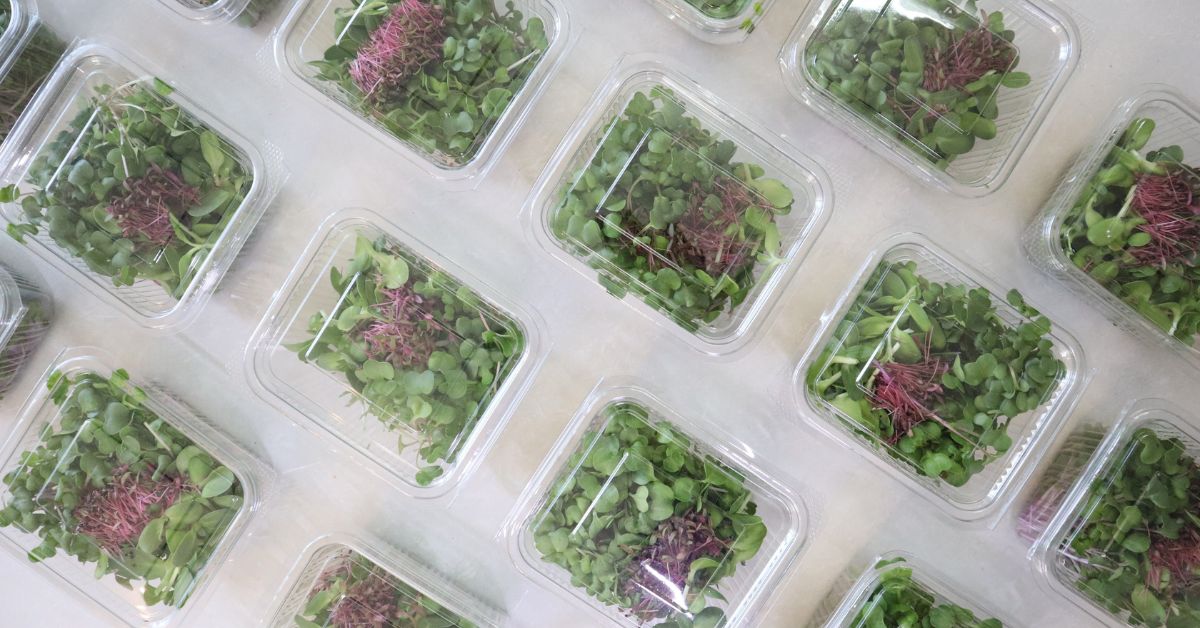When Aditi Mali, an urban farmer and visiting professor at Ahmedabad College, decided to connect her students to farming by making it practical, she faced a challenge.
“I would ask my students to adopt a plant and grow it, but by the time the course ended, the plant had only grown a little bit. Since it takes longer for a fruit or vegetable to grow, the activity was not as fruitful as I hoped,” she shares in a conversation with The Better India.
This is when she discovered an alternative: growing microgreens. At the time, she was not aware that what began as a way to make farming more engaging for her students would later become a career path for her.
“Microgreen plants require less time to grow, which makes them an excellent option for my students to cultivate. However, as I began to explore them further, I realised they are nutrient-dense and are considered a superfood,” she says.
Currently, Aditi is the founder of Mali Greens, a business that offers over 18 different varieties of microgreens to more than 900 customers across the city. We talked to her extensively about the intricacies of running a microgreens business and how you can start one yourself.
‘Entrepreneurship is in my blood’
Born and raised in a business family, Aditi says that she has been learning and doing marketing for her father since she was a child. “Business is in my blood. I have been around businessmen my whole life. However, as I grew up, I started to drift a little towards other things,” she says.
In her graduation, she opted for Urban Planning and fell in love with the way villages work. “I fell in love with the rural lifestyle. The city life is good but if I was given a choice, I would have lived in a smaller city or farming in a village,” she says.
This love was nurtured over time and she decided to study urban farming and nutrition.

“However, I was a commerce student in school and I was told that I could not do a masters in farming. I was adamant and wanted to learn urban farming which is why I decided to look for colleges outside India. I found one in the UK and got admitted into it,” she says.
The course went beyond mere farming; it delved deeply into the nutrition we require. “When I returned, I began teaching as a visiting faculty member at several colleges in Ahmedabad. Watching my students grow microgreens inspired me to try it out myself,” she says, adding that previously her work and life got in the way.
. “During the COVID-19 pandemic, when we were all confined to our homes, I decided to give it a try. I had an empty guest room, which I converted into a space to grow microgreens,” she says.
She continues, “I found the whole process very intriguing, and decided to take it up as a business. I decided to set up my own farm and grow microgreens commercially.”
This laid the foundation of Mali Greens in 2021. “I started with growing 1 kg of microgreens at home and now my farm can grow 50 kg of microgreens in one harvest,” shares Aditi.
Why microgreens?
Falling between the categories of a baby green and a sprout, microgreens are nutrition-packed herbs and vegetables. According to a Healthlinearticle, “They often contain higher nutrient levels than more mature vegetable greens. This makes them a good addition to any diet.”
Aditi believes that India still doesn’t have a lot of knowledge about the superfood microgreens.
“When I am at the farmer’s market or at pop-ups and am interacting with the people, I realise that there is a lot of unawareness among them. Including these little pockets of nutrition in your daily diet can really do wonders for your body. They contain large amounts of vitamins B, K and C, folic acid, magnesium, minerals and antioxidants, which have immense health benefits,” she says.
“When you consume 20-30 gm of a microgreen vegetable, you are eating double the nutritional value of the same amount of regular vegetables,” she adds.

Aditi believes that growing microgreens with the right tools and guidance can be done, adding that you can simply start at home.
Behind the scenes of growing microgreens
Talking about the harvesting process of microgreens, Aditi says, “We have a vertical farm and we do it indoors. The microgreens take an average of 5 to 7 days to grow, but it also depends on the variety. We deliver them according to the demand.”
After several trials and errors, Aditi has developed a method. “We use chemical-free seeds to grow our microgreens. We are very organic in our methods and do not use any pesticides. On day one, we grow them in a dark room and once they sprout, we bring them to the light room. We harvest only on demand to reduce wastage.”
This also ensures that the delivery is fresh and natural. “If we overproduce at all, we feed it to stray animals,” she says.
Growing the power-packed superfoods can come with a set of challenges. Talking about it, Aditi says, “Since the concept is still relatively new, there are not many resources available to set up a microgreen farm.”
“From the racks to the boxes, sourcing raw materials was challenging. We repurposed trays for use in our setup. For the soil, I experimented with different combinations of soils and cocopeat to find the right mix after a lot of trial and error. There were no direct predecessors to learn from, so I relied on online resources and YouTube videos to understand the process,” she says.
Creating a balance between the demand and scaling the farm was another challenge that Aditi faced.
“It is tricky to develop a balance between demand and supply of the microgreen. We are still learning on the go and there is nothing much we can do but learn from last year’s mistakes,” she says.
Things to keep before starting a microgreens business
1. Market your product before growing microgreens, Aditi advises. “It is difficult to make people understand what they are and why they should consume it. Once you have found your market, you can start investing money into a farm.”
2. Microgreens need constant temperature monitoring. “So make sure that you do not buy a farm in an electricity-deficient area. The farm will need constant monitoring and supply of electricity and water.”
3. Growing microgreens is like raising babies. “When I started doing it, the first six months I had even stopped going out. I had to dedicate myself completely. You have to water them thrice a day and keep a sharp eye for pesticides. So, it is a big commitment,” she says.
4. Understand your surroundings well. If you are in a city, where the weather is similar to Bengaluru and Pune, then your cost to set up a commercial farm will be somewhere around Rs 5 lakh. However, if you are in drier areas, the cost can go up to Rs 10 lakh.
5. Being patient is the key to growing any plant, she says. “While the microgreens do not take much time to grow, there is a lot of scope for things to go wrong. And things will go wrong, so having patience and doing things over and over again is the key,” she says.
Want to know more about microgreens? Visit the website here.
(Edited by Padmashree Pande; All picture credit: Aditi Mali)
No comments:
Post a Comment